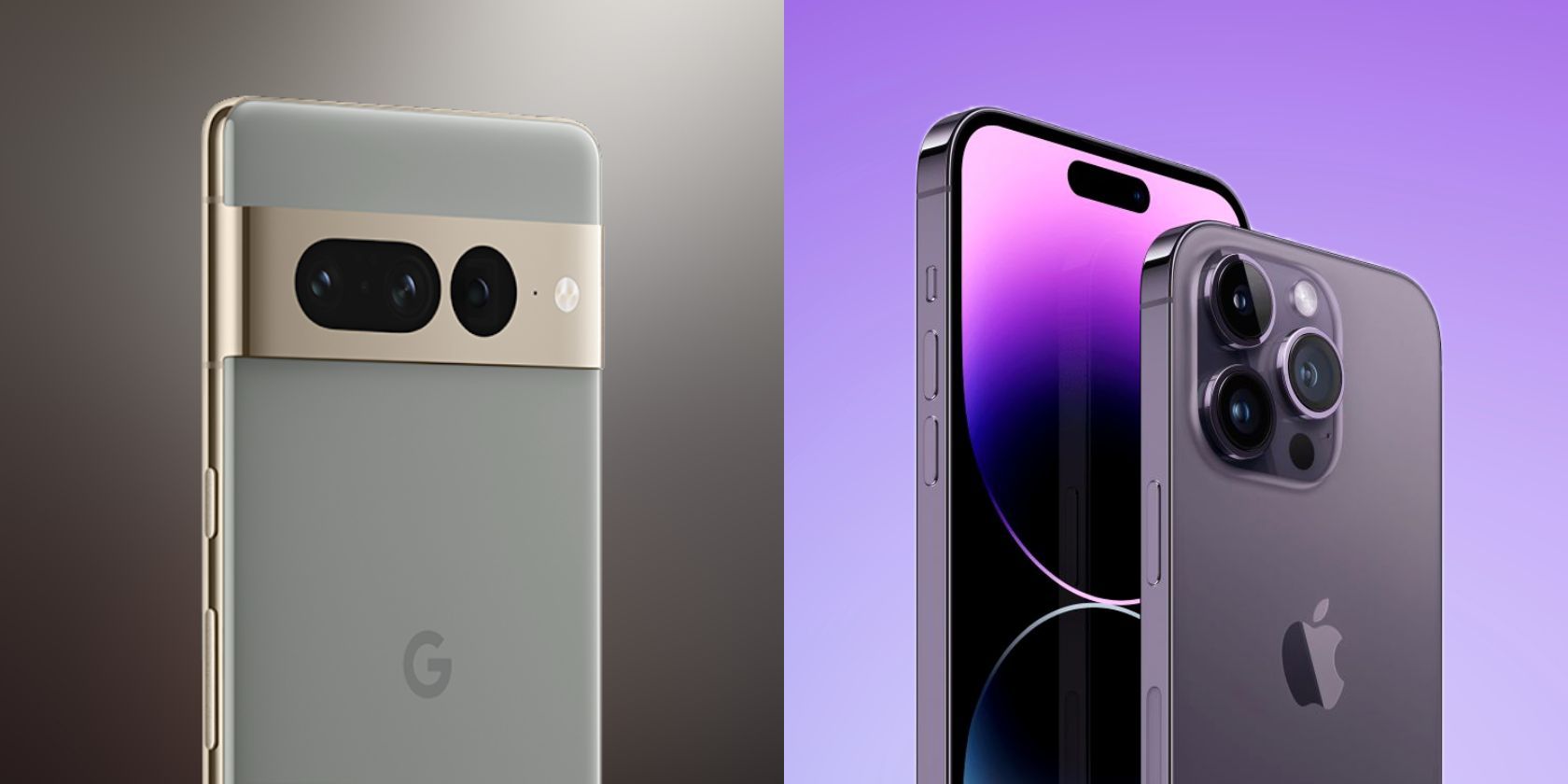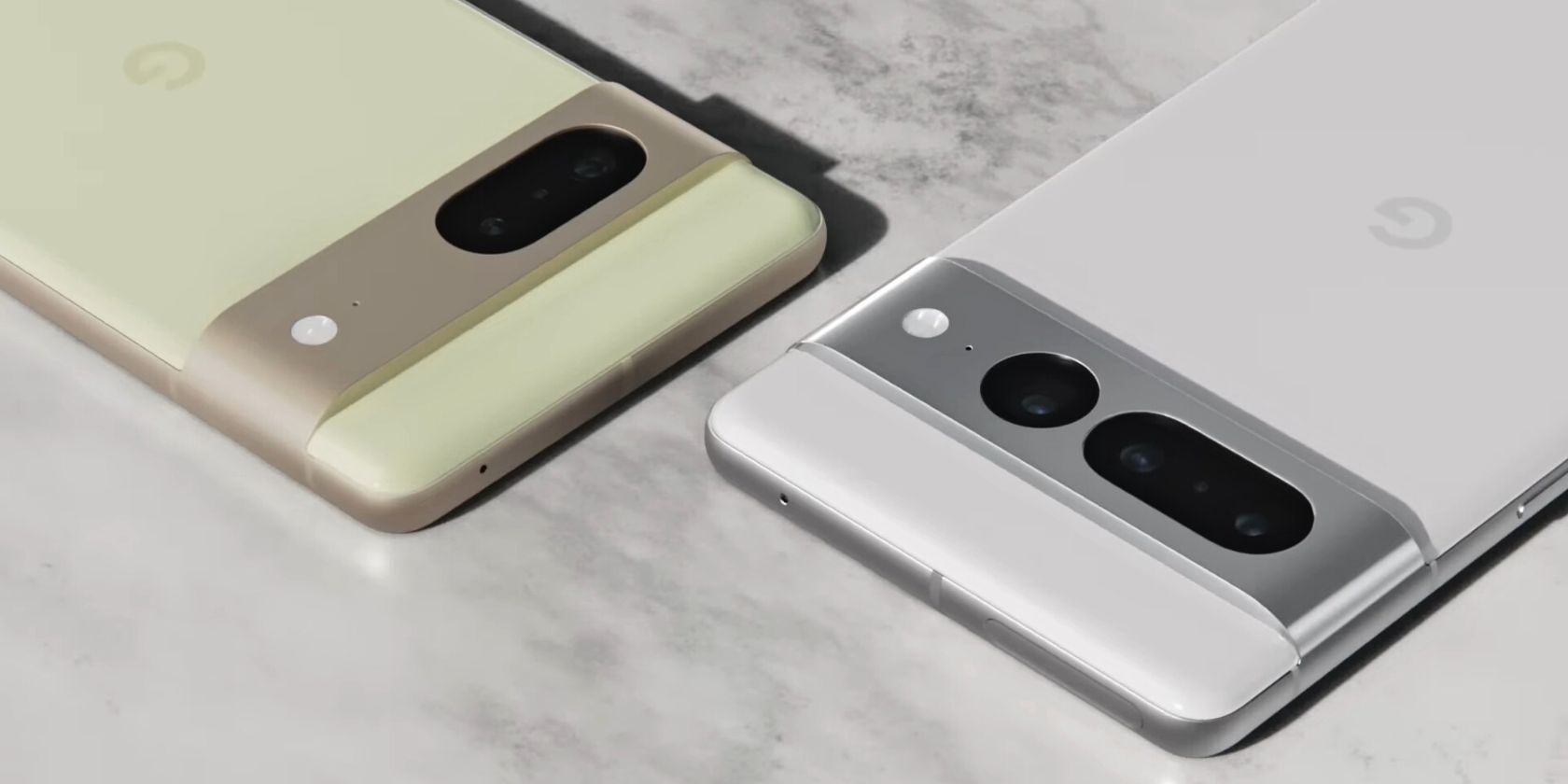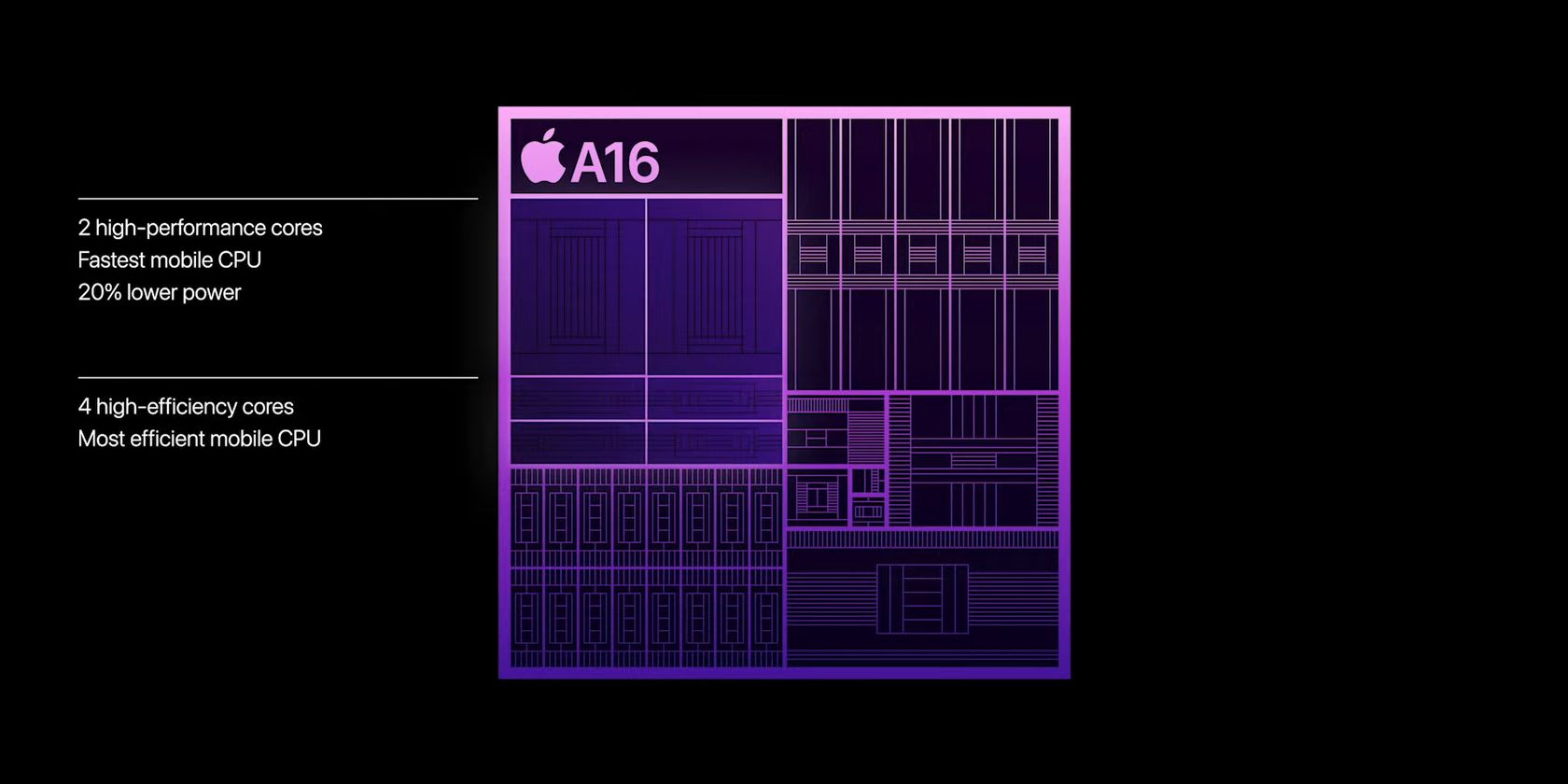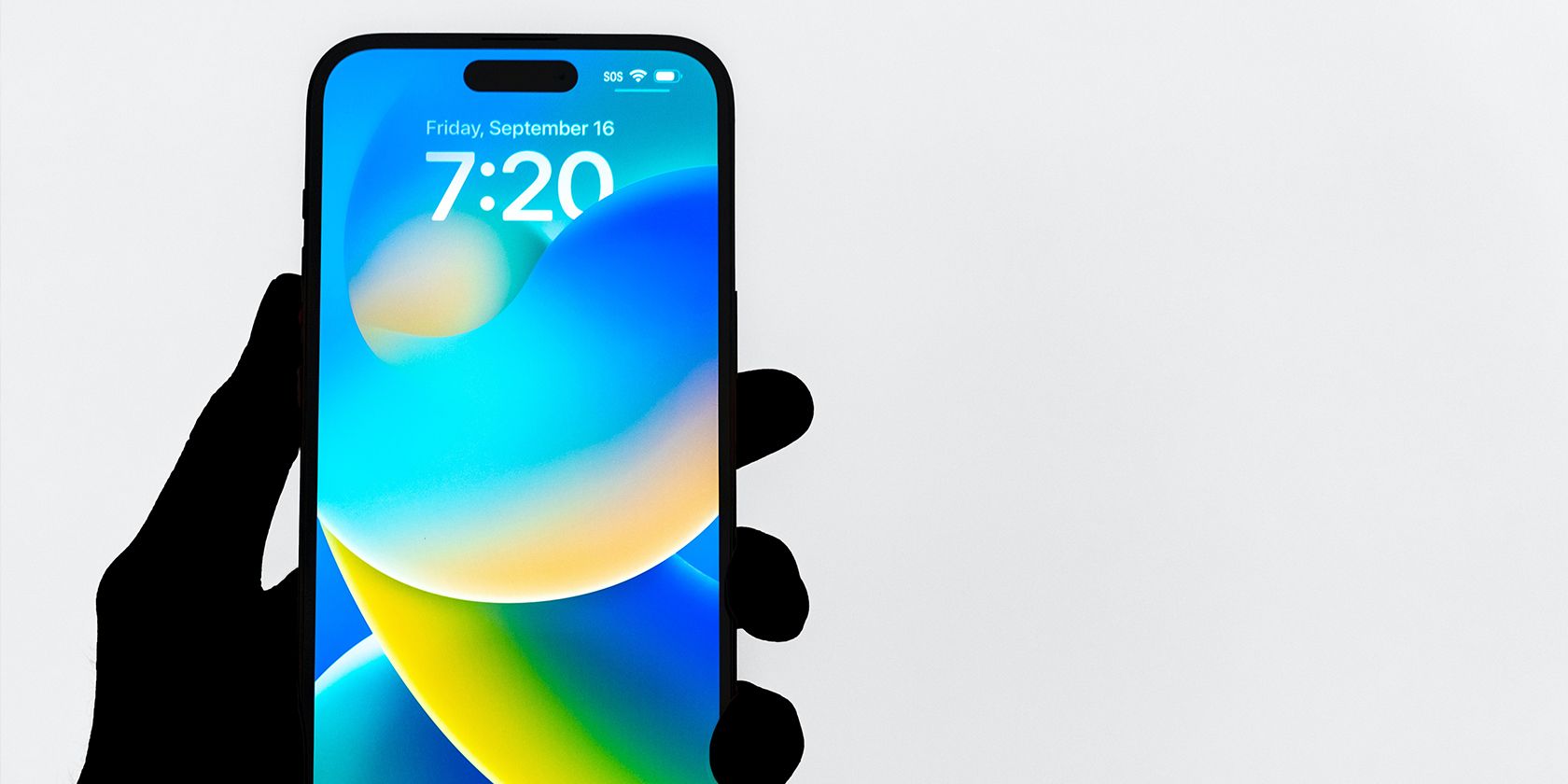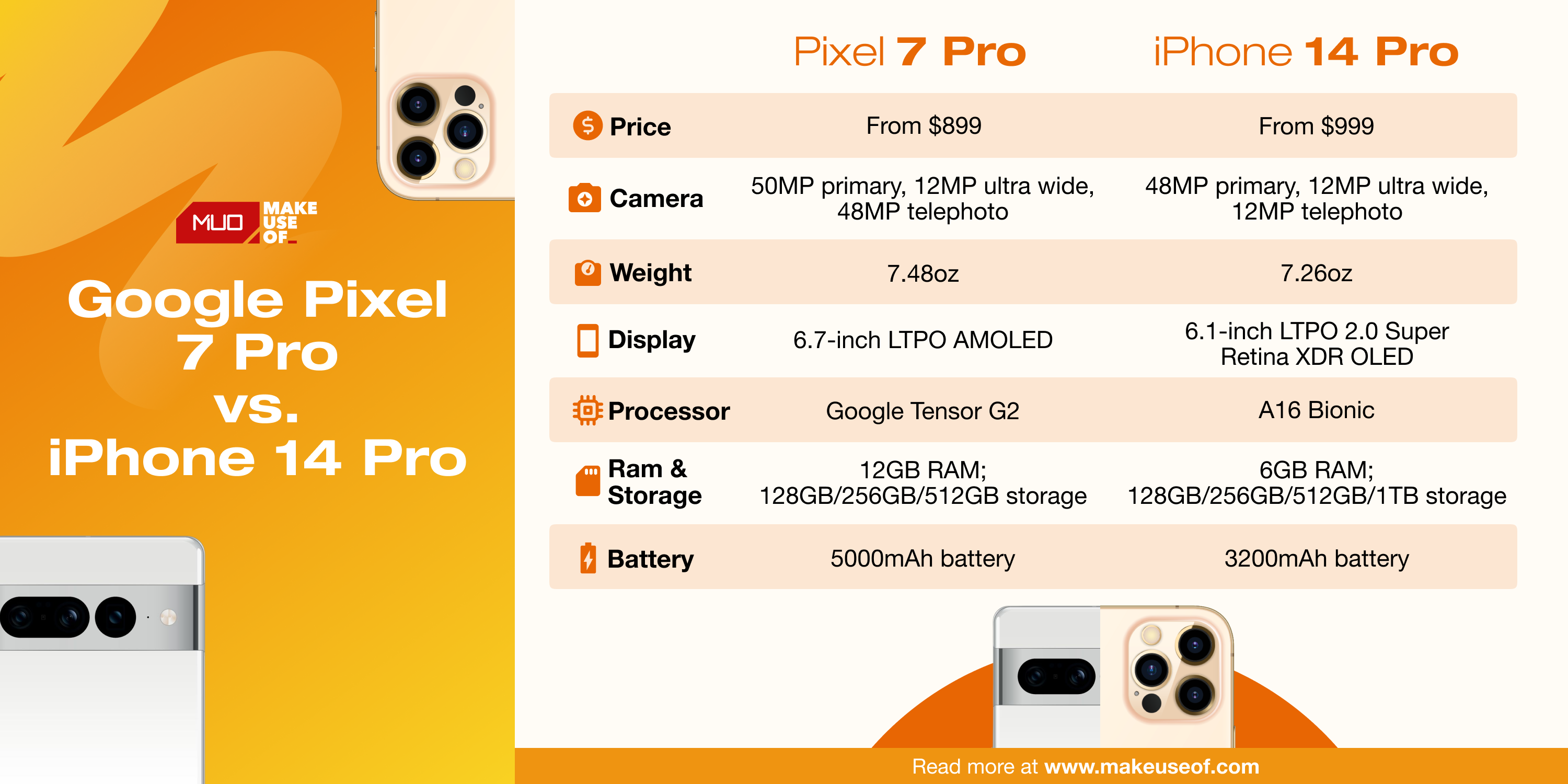The Pixel 7 Pro and the iPhone 14 Pro are two of the best smartphones on the market right now, especially if you live in the US. With the success of the Pixel 6 series, Google is planning to continue its trajectory with the Pixel 7 series and ship significantly more units. On the other hand, the iPhone 14 Pro has a lot that makes it really compelling.
So which one should you actually buy? The Pixel 7 Pro starts at $899 and the iPhone 14 Pro starts at $999. Let's compare both phones and see which is a better deal for you.
Dimensions and Build Quality
- Pixel 7 Pro: 162.9 x 76.6 x 8.9 mm; 212 grams; IP68 dust and water-resistant
- iPhone 14 Pro: 147.5 x 71.5 x 7.9 mm; 206 grams; IP68 dust and water-resistant
The Pixel 7 Pro is taller, wider, thicker, and slightly heavier than the iPhone 14 Pro. For people with smaller hands, the latter will be more comfortable to hold in hand; that said, many people like bigger phones, so you might want to consider the iPhone 14 Pro Max as well.
The Pixel 7 Pro uses an aluminum frame and Gorilla Glass Victus on the front and back; the slightly curved front glass looks premium but makes it more prone to cracks. The iPhone 14 Pro uses a stronger stainless steel frame and has Ceramic Shield coating on the front glass. The curved edges on the iPhone may feel more comfortable in hand.
The iPhone 14 series is eSIM only in the US, which can be problematic if you're a frequent traveler or your mobile carrier requires physical SIMs. A much bigger inconvenience with the iPhone 14 series is that it still uses super outdated Lightning ports against USB-C ports which are the standard for all modern electronic gadgets.
Both devices have an IP68 rating for water and dust resistance, don't have a headphone jack, don't have a microSD card slot, and don't come with a charger inside the box. The Pixel 7 Pro is available in three colors: Obsidian, Snow, and Hazel. The iPhone 14 Pro is available in four colors: Space Black, Silver, Gold, and Deep Purple.
Display
- Pixel 7 Pro: 6.7-inch LTPO AMOLED; 120Hz refresh rate; 1440 x 3120 resolution; 512 PPI; 1,500 nits peak brightness; HDR10+; Gorilla Glass Victus; Always-on Display; 88.7% screen-to-body ratio; 19.5:9 aspect ratio
- iPhone 14 Pro: 6.1-inch LTPO 2.0 Super Retina XDR OLED display; 120Hz ProMotion; 1179 x 2556 resolution; 460 PPI; 2,000 nits peak brightness; HDR 10; Ceramic Shield protection; Always-on Display; 87.0% screen-to-body ratio; 19.5:9 aspect ratio
The Pixel 7 Pro has a bigger 6.7-inch LTPO 120Hz QHD+ AMOLED display and can scale down the refresh rate to 10Hz when you're looking at something static to save battery life. The iPhone 14 Pro has a smaller 6.1-inch LTPO 2.0 120Hz ProMotion FHD+ OLED display and can scale down the refresh rate all the way to 1Hz.
The Dynamic Island on the iPhone 14 Pro lineup is the new face of the iPhone, and it's what made all the headlines. The pill-shaped cutout uses software to intuitively morph into different shapes to display all sorts of glanceable info and ongoing background activities. It improves multitasking and serves as a fancy replacement for the notification panel.
Camera
- Pixel 7 Pro: 50MP f/1.9 primary, OIS, PDAF, Laser autofocus, 4K video at 60fps; 12MP f/2.2 ultra-wide (126-degree FoV), autofocus, macro photography; 48MP f/3.5 telephoto, PDAF, OIS, 5x optical zoom; Front: 10.8MP f/2.2 ultra-wide (92.8-degree FoV), 4K video at 60fps
- iPhone 14 Pro: 48MP f/1.8 primary, sensor-shift OIS, dual-pixel PDAF, 4K video at 60fps; 12MP f/2.2 ultra-wide (120-degree FoV), dual-pixel PDAF, macro photography; 12MP f/2.8 telephoto, OIS, 3x optical zoom; Front: 12MP f/1.9, PDAF, 4K video at 60fps
Pixel phones have always enjoyed praise for their cameras and were the ones that pioneered and mainstreamed computational photography in the tech industry. The iPhone's cameras, on the other hand, are known for their consistency, reliability, and excellent video quality.
That said, we do believe that the Pixel has a more helpful camera system thanks to all the Pixel camera features like Magic Eraser, Photo Unblur, Real Tone, Guided Frame, Motion Mode, and more; it now also has Cinematic Blur just like the Cinematic mode on the iPhone.
Thanks to pixel binning technology, you get 12.5MP shots by default on the Pixel 7 Pro and 12MP shots on the iPhone 14 Pro. Both phones can use the ultra-wide lens as a macro lens, but the telephoto lens on the Pixel allows up to 5x optical zoom whereas the one on the iPhone only allows 3x optical zoom. You can also get up to 30x hybrid zoom on the Pixel and 15x digital zoom on the iPhone.
Photos from Pixel phones are almost always more colorful, have more dynamic range and contrast, and represent different skin tones more accurately. But iPhones have faster shutter speed, better video, and are more consistent at shooting low-light shots whereas the Pixel sometimes over-processes things.
Processor
- Pixel 7 Pro: Google Tensor G2; 5nm fabrication; Mali-G710 MC10 GPU
- iPhone 14 Pro: A16 Bionic; 4nm fabrication; 5-core GPU
In terms of raw performance, there's no competition between the A16 Bionic processor on the iPhone 14 Pro and the Tensor G2 processor on the Pixel 7 Pro; the former is clearly more powerful than the latter.
That said, benchmark scores don't really matter that much, and Google seems more interested in using the Tensor G2 chip to improve features like Live Translate, Call Assist, speech detection, and more. In real life, it's unlikely that you'll notice any major difference when interacting with the UI.
RAM and Storage
- Pixel 7 Pro: 12GB RAM; 128GB/256GB/512GB storage
- iPhone 14 Pro: 6GB RAM; 128GB/256GB/512GB/1TB storage
We know that iPhones are better at RAM management and hence require less of it than Android phones, but software excellence can only make up for hardware deficiency up till a certain point. You're likely to get slightly better multitasking capability on the Pixel 7 Pro with its 12GB RAM than on the iPhone 14 Pro with its 6GB RAM.
Both phones have 128GB storage on the base model, but only the iPhone 14 Pro can go all the way up to 1TB whereas the Pixel 7 Pro caps at 512GB. Neither of the two phones supports expandable storage, so it's a good idea to check our guide on how much storage you need before making the purchase.
Battery
- Pixel 7 Pro: 5000mAh battery; 23W fast wired charging; 23W fast wireless charging; reverse wireless charging
- iPhone 14 Pro: 3200mAh battery; 15W MagSafe wireless charging support; 7.5W with Qi wireless charging; 50% charge in 30 minutes
Similar to the last point, iPhones are more power efficient and hence use less of it than Android phones. But yet again, good software is not a replacement for better hardware.
You might still see slightly better battery life on the iPhone 14 Pro (especially if you turn off Always-On Display), but that difference is not big enough for us to deem the iPhone as the winner. If you want the most battery life possible on any smartphone, consider the iPhone 14 Pro Max or the iPhone 14 Plus.
The Pixel 7 Pro has faster charging at up to 23W for both wired and wireless via Google's official chargers, while the iPhone 14 Pro has slower 20W wired charging and 15W wireless charging via MagSafe. The Pixel also offers reverse wireless charging to charge your earbuds and smartwatch.
You don't get a charger in the box for either of them, but you knew that already.
The Best of Google vs. the Best of Apple
If you're already tied to the Apple ecosystem, the iPhone 14 Pro is a no-brainer. But even if you're an Android user, new features on the iPhone like the Dynamic Island, Satellite Connectivity, Crash Detection, and custom Always-On Display do spark a lot of interest. However, the Lightning port on the iPhone 14 series continues to infuriate us.
On the flip side, the Pixel 7 Pro is slightly cheaper, has more useful camera software features, and has a more refreshing design on the back. Also, don't forget that Pixel phones get OS updates before any other Android phone, and also get new features every few months.

